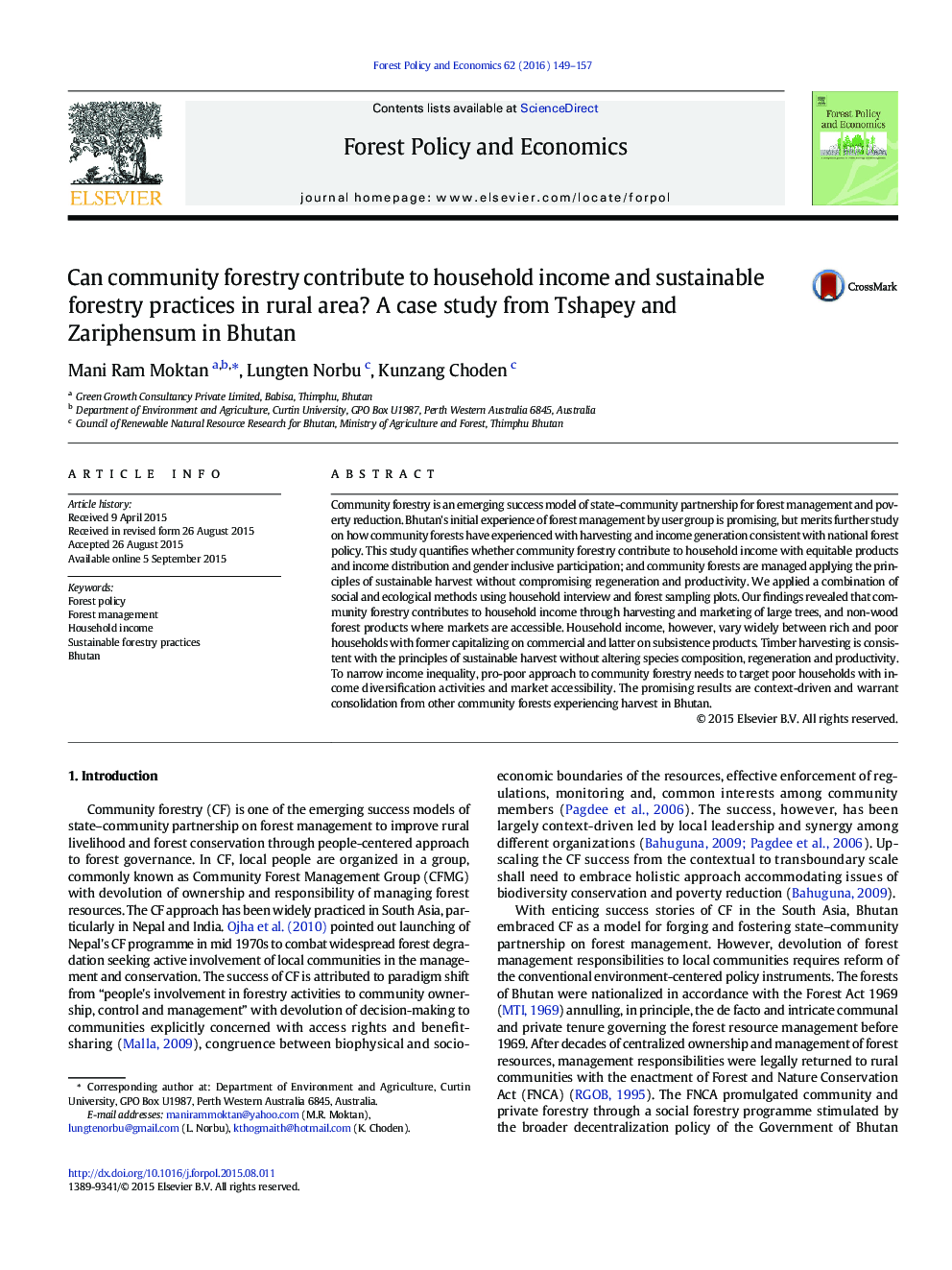| Article ID | Journal | Published Year | Pages | File Type |
|---|---|---|---|---|
| 6544916 | Forest Policy and Economics | 2016 | 9 Pages |
Abstract
Community forestry is an emerging success model of state-community partnership for forest management and poverty reduction. Bhutan's initial experience of forest management by user group is promising, but merits further study on how community forests have experienced with harvesting and income generation consistent with national forest policy. This study quantifies whether community forestry contribute to household income with equitable products and income distribution and gender inclusive participation; and community forests are managed applying the principles of sustainable harvest without compromising regeneration and productivity. We applied a combination of social and ecological methods using household interview and forest sampling plots. Our findings revealed that community forestry contributes to household income through harvesting and marketing of large trees, and non-wood forest products where markets are accessible. Household income, however, vary widely between rich and poor households with former capitalizing on commercial and latter on subsistence products. Timber harvesting is consistent with the principles of sustainable harvest without altering species composition, regeneration and productivity. To narrow income inequality, pro-poor approach to community forestry needs to target poor households with income diversification activities and market accessibility. The promising results are context-driven and warrant consolidation from other community forests experiencing harvest in Bhutan.
Related Topics
Life Sciences
Agricultural and Biological Sciences
Forestry
Authors
Mani Ram Moktan, Lungten Norbu, Kunzang Choden,
